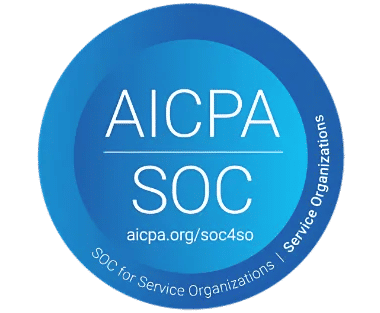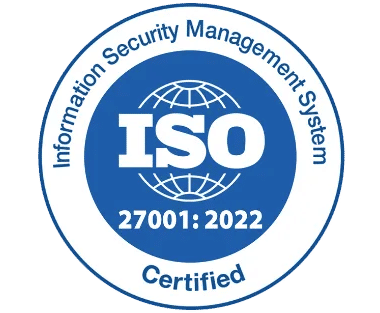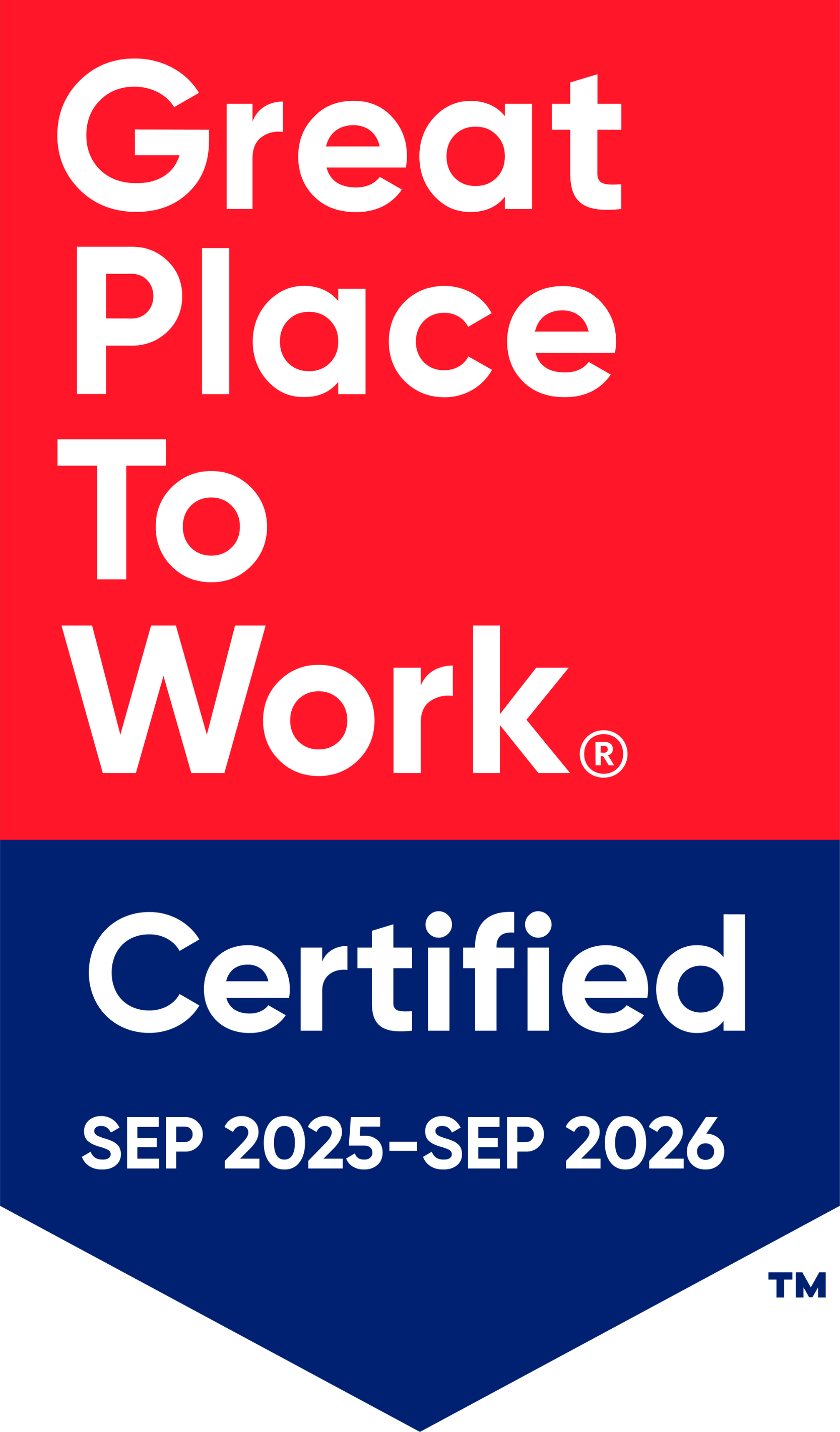Performance Management System: A Comprehensive Guide
A Performance Management System simplifies goal setting, feedback, and evaluations to boost employee productivity and growth.

What is Performance Management System?
A Performance Management System is a structured approach used by organizations to monitor, evaluate, and improve employee performance. It helps align individual goals with organizational objectives, fostering a culture of accountability, productivity, and continuous development.
Organizations need more than just annual performance reviews. They require a continuous and dynamic system that provides real-time feedback, identifies skill gaps, and motivates employees to excel. Managing employee performance isn’t just about reviewing past work; it’s about motivating better results and moving forward.
Key Elements of a Performance Management System?
An effective Performance Management System (PMS) ensures employees perform at their best and aligns their goals with the organization’s objectives. Key elements include:
- Goal Setting & Alignment: Clear, SMART goals should align with organizational objectives. Goals should be tailored to individual capabilities, ensuring team and company success.
- Continuous Feedback & Communication: Regular check-ins and constructive feedback promote growth, with open communication channels to address challenges.
- Performance Appraisal & Evaluation: Annual or bi-annual reviews, along with 360-degree feedback and self-assessments, help track progress and encourage self-awareness.
- Training & Development: Identifying skill gaps and offering learning programs ensures continuous employee growth and career progression.
- Recognition & Rewards: Monetary and non-monetary incentives, along with public appreciation and peer recognition, motivate employees and reinforce high performance.
- Performance Improvement Plans (PIPs): Structured support for underperforming employees through clear expectations, regular feedback, and progress tracking helps them improve.
- Data Analytics & Performance Metrics: KPIs, engagement metrics, and AI-driven insights provide data to measure performance, predict future trends, and enhance decision-making.
Why is a Performance Management System Important?
A Performance Management System (PMS) helps organizations track, evaluate, and enhance employee performance, aligning individual efforts with company goals. It optimizes workforce efficiency, improves engagement, and fosters a culture of growth and accountability.
Key Benefits of a Performance Management System
- Aligns Goals with Business Objectives
- Employees understand how their work contributes to company success.
- Clear goals enhance motivation and focus.
- Enables Continuous Feedback & Communication
- Real-time feedback promotes improvement.
- Regular check-ins enhance engagement and problem-solving.
- Enhances Employee Development
- Identifies skill gaps and training needs.
- Supports career growth and succession planning.
- Boosts Motivation & Productivity
- Clear objectives and regular recognition drive performance.
- Fair evaluations build trust and accountability.
- Encourages Accountability
- Tracks progress and ensures responsibility.
- Creates a transparent, high-performance culture.
- Supports Data-Driven Decisions
- Performance insights guide promotions, compensation, and training.
- Helps in talent retention and workforce planning.
- Improves Employee Retention
- Fair evaluations and career growth opportunities increase job satisfaction.
- A strong PMS fosters loyalty and reduces turnover.
- Fosters a Culture of Excellence
- Encourages continuous learning and collaboration.
- Employees are motivated to exceed expectations.
- Helps Meet Organizational Goals
- Aligns individual performance with business strategy.
- Ensures measurable success and strategic adjustments.
- Adapts to Evolving Work Environments
- Enables goal tracking for hybrid and remote teams.
- Adjusts performance expectations based on business needs.
Who Uses Performance Management Software?
Performance management software is used by organizations across various sectors use performance management software to assess, improve and track employee productivity. It helps improve productivity, align individual goals with organizational objectives, and drive overall business success.
1. Human Resources (HR) Teams
HR departments are one of the primary users of performance management tools. They leverage the software to:
- Track employee performance: Monitor individual performance against set goals and key performance indicators (KPIs).
- Facilitate performance reviews: Schedule and manage regular evaluations, including annual reviews or 360-degree feedback.
- Align employee objectives with company goals: Ensure that employees’ personal goals and team objectives align with the larger organizational goals.
- Manage employee development: Identify skill gaps and career development opportunities to assist in employee growth.
- Ensure compliance: Maintain records and ensure performance reviews meet legal and organizational standards.
2. Managers and Team Leaders
Managers and team leaders use performance management software to manage the performance of their direct reports. Their key uses include:
- Setting individual goals and objectives: Creating personalized targets aligned with team or company goals.
- Continuous feedback and coaching: Providing real-time feedback and ongoing support to improve performance.
- Tracking progress: Monitoring employee progress on their goals and helping adjust as needed.
- Conducting performance appraisals: Managers often use the software to facilitate structured performance reviews and provide constructive feedback.
3. Executives and Leadership Teams
For higher-level organizational leaders, performance management software is essential for:
- Strategic decision-making: Providing data-driven insights into the overall workforce performance, helping executives make informed decisions.
- Improving organizational effectiveness: Identifying patterns in performance that can help improve overall organizational performance, morale, and retention.
- Employee retention and succession planning: Spotting high-potential employees and planning for leadership succession.
4. Employees
Employees themselves are users of performance management software, is a more passive or self-directed manner. Employees use the software to:
- Set personal goals: Align their personal development and career goals with team or organizational objectives.
- Track their progress: Monitor their achievements, performance metrics, and areas for improvement.
- Request feedback: Actively seek feedback from managers and peers to foster continuous improvement.
- Prepare for performance reviews: Employees can use the software to gather data, reflect on achievements, and contribute to performance evaluations.
5. Learning and Development Teams
Learning and development (L&D) departments use performance management software to track employee performance and development progress. Their focus is often on:
- Identifying skill gaps: The software helps L&D teams identify where employees need additional training or development.
- Tracking learning progress: Monitoring whether employees are engaging with training programs and achieving the desired outcomes.
- Creating personalized learning paths: Based on performance data, L&D teams can tailor training programs to address individual employee needs.
6. Sales Teams
Sales teams, particularly in organizations that have a high focus on targets and quotas, use performance management software to:
- Monitor sales performance: Track sales targets, conversion rates, and other KPIs to ensure the team is on track.
- Incentivize high performance: Reward top-performing employees with bonuses or incentives based on performance metrics tracked within the software.
- Provide targeted support: Identify underperforming sales reps and offer the necessary coaching or resources to help them improve.
7. Project Management Teams
Project management teams use performance management software to monitor the productivity and performance of team members involved in projects. This includes:
- Tracking milestones and deadlines: Ensuring that team members meet project deadlines and performance expectations.
- Collaborating on performance metrics: Using the software to set, track, and review performance metrics throughout the project lifecycle.
- Evaluating project outcomes: Once the project is complete, the software can help assess team performance and identify areas for improvement in future projects.
8. Small and Medium-sized Enterprises (SMEs)
Smaller organizations and startups use performance management software to scale their operations and improve team effectiveness. SMEs often face challenges in managing performance without a formalized process, and performance management software helps them:
- Implement clear performance expectations: Establish clear performance metrics even in smaller teams.
- Foster employee development: Support employee growth through structured performance feedback and training.
- Promote accountability and transparency: Provide visibility into employee performance, ensuring accountability.
9. Large Corporations and Enterprises
Larger organizations typically need a robust employee performance management system to handle a larger number of employees. These organizations use the software to:
- Manage complex organizational structures: Track performance across various departments, teams, and regions.
- Ensure consistency: Maintain a consistent approach to performance management across the organization, which is critical when dealing with a large workforce.
- Monitor business-wide goals: Ensure that employees across all levels contribute to the organization’s strategic initiatives and overarching objectives.
10. Consulting and Advisory Firms
Consulting firms and external advisory services use performance management software to help their clients assess and improve performance. These firms might:
- Audit employee performance: Conduct performance evaluations as part of a broader organizational audit for clients.
- Provide recommendations: Offer strategic advice based on the data provided by performance management software.
- Customize solutions: Develop and implement tailored performance management strategies for clients using the software.
11. Nonprofit Organizations
Nonprofit organizations, which often operate with tight budgets and require high levels of accountability, also use performance management software to:
- Track donor-funded projects: Monitor the success of initiatives funded by donors and track the performance of employees working on them.
- Improve program outcomes: Assess the performance of staff in delivering services and programs, aligning efforts with the mission of the organization.
What Are Performance Management Best Practices?
Staff performance management system best practices are strategies that optimize the effectiveness of performance management systems. They ensure consistent improvements in employee performance and alignment with organizational goals.
By promoting continuous development, accountability, and engagement, these practices enhance productivity, employee satisfaction, and overall business success.
1. Set Clear and Measurable Goals
Clear, specific, and measurable goals are at the heart of effective performance management.
- SMART Goals: Ensure that goals are Specific, Measurable, Achievable, Relevant, and Time-bound. This framework helps employees clearly understand what they need to accomplish and how success will be measured.
- Align Goals with Organizational Objectives: Employee goals should align with broader company goals to ensure that individual contributions directly support the organization’s strategy. This alignment fosters a sense of purpose and helps employees see how their work impacts the company’s success.
- Break Goals into Actionable Steps: Large, long-term goals can be overwhelming. Break them down into smaller, manageable tasks and milestones to help employees stay on track and feel a sense of achievement as they progress.
2. Regular Feedback and Communication
Regular feedback is essential for improving employee performance. Best practices Suggest integrating it into daily workflows.
- Frequent Check-ins: Instead of waiting for an annual review, provide feedback throughout the year with regular check-ins (monthly or quarterly) to track progress, discuss challenges, and offer guidance.
- Constructive Feedback: Provide specific actionable and constructive feedback. Focus on behaviours and outcomes rather than personal traits to ensure that feedback is helpful and focused on improvement.
- Two-way Communication: Encourage open dialogue between managers and employees. Allow employees to provide feedback on their experiences, challenges, and needs. This fosters trust and shows that their input is valued.
- Immediate Feedback: When possible, provide feedback in real-time to address issues or praise good work before they have a chance to escalate.
3. Foster Continuous Development and Learning
A performance management system should not only focus on evaluating past performance but also on supporting future growth:
- Development Plans: Create personalized development plans based on performance reviews that outline the steps employees can take to improve their skills and reach their goals.
- Training and Development: Invest in training programs to close skill gaps and provide employees with opportunities to learn and grow in their roles. Use performance data to identify areas where training is most needed.
- Mentorship and Coaching: Encourage mentoring relationships or coaching programs where senior employees or managers guide less experienced ones, helping them develop new skills and grow professionally.
- Growth Mindset: Foster a culture where employees are encouraged to view challenges as opportunities for growth, learning, and improvement. Adopting this mindset leads to measurable improvements in employee can drive ongoing performance.
4. Use Data-Driven Insights for Decision-Making
Leverage data from best performance management systems to make informed decisions that improve organizational outcomes:
- Track and Measure Performance: Leverage digital performance tracking software to collect data on employee progress and achievements. This data can provide objective insights into performance trends and highlight areas for improvement.
- Identify High Performers: Use the data to identify top performers and consider how to recognize and reward them. This also helps in succession planning, identifying individuals for leadership roles or future responsibilities.
- Monitor Organizational Trends: Data analysis can reveal patterns across the organization, such as common areas of struggle or skill gaps, which can inform training programs, goal adjustments, and overall strategy.
5. Select the Best Software
When choosing a performance management system, it’s essential to select software that seamlessly integrates with the tools your team already uses. Look for a solution that:
- Integrates with MS Teams – Enable smooth communication and collaboration within your organization.
- Works with Outlook – Sync tasks, meetings, and performance reviews effortlessly.
- Connects with SharePoint – Centralize documents and performance-related resources.
Explore top-rated solutions on Microsoft AppSource to find the best fit for your business.
6. Ensure Fair and Transparent Evaluations
Fairness and transparency in performance evaluations are essential to building trust and credibility in the process:
- Standardized Evaluation Criteria: Use objective, consistent criteria when evaluating employee performance to ensure fairness. This prevents biases and ensures that all employees are evaluated on the same scale.
- Bias Awareness and Training: Provide training to managers on recognizing and eliminating biases in the evaluation process. Bias can affect performance reviews, leading to unfair assessments.
- Clear Expectations: Ensure that employees understand how they will be evaluated and the criteria used to measure their performance. Transparent processes increase trust and employee engagement.
- 360-Degree Feedback: Consider incorporating 360-degree feedback, where input is gathered not only from the manager but also from peers, subordinates, and even external stakeholders. This provides a well-rounded view of performance and reduces the likelihood of biased assessments.
7. Link Performance to Rewards and Recognition
Linking performance management system to rewards and recognition motivates employees and reinforces desired behaviours:
- Incentives and Rewards: Establish reward systems based on performance, such as bonuses, pay increases, promotions, or other forms of recognition. This ensures that employees are recognized for their hard work and achievements.
- Non-monetary Recognition: Not all rewards need to be financial. Recognition can also come in the form of public acknowledgment, additional responsibilities, or special projects that allow employees to showcase their skills.
- Tailor Recognition: Identify each employee’s unique motivators to tailor recognition strategies effectively. Some may prefer public recognition, while others may appreciate private acknowledgment or additional career development opportunities.
8. Create a Culture of Continuous Improvement
Performance management should be seen as a continuous process, not a one-time event. Best practices encourage organizations to create a culture focused on continuous improvement:
- Embrace Agility: Be flexible in adapting goals and strategies based on performance outcomes. Regularly reassess goals to ensure they are still relevant and achievable in a changing business environment.
- Encourage Innovation: Create an environment where employees feel empowered to suggest new ideas and ways to improve processes. Encouraging innovation can drive both individual and organizational growth.
- Ongoing Learning: Continually offer opportunities for learning and development. This could include workshops, e-learning, or on-the-job training to ensure employees are constantly improving their skills.
9. Promote Well-being and Work-Life Balance
Employee well-being is an essential aspect of performance management. A happy, healthy workforce is more likely to perform well:
- Work-life Balance: Encourage work life balance to prevent burnout and sustain productivity.
- Employee Wellness Programs: Offer wellness initiatives such as fitness programs, mental health support, or flexible working arrangements that help employees maintain their overall well-being.
- Supportive Environment: Create a supportive and inclusive work environment where employees feel safe to express concerns or seek help when necessary.
10. Use Technology and Automation to Streamline the Process
Leveraging technology can significantly enhance the effectiveness of performance management practices:
- Performance Management Software: Invest in performance management software to streamline the process of setting goals, tracking progress, collecting feedback, and conducting reviews. This software often includes performance management features like automated reminders, performance dashboards, and real-time analytics.
- AI and Data Analytics: Use AI-powered tools and data analytics to gain deeper insights into performance trends and employee behaviour. These insights can help guide better decision-making and improve the personalization of development plans.
Performance Management System for the Modern Workplace
A modern Performance Management System (PMS) is a dynamic tool designed to enhance employee performance, development, and engagement in today’s fast-paced, evolving work environment. With technological advancements, remote work models, diverse teams, and a focus on employee well-being and continuous learning, Staff Performance Management System must adapt to meet these changing needs.
1. Continuous Feedback and Ongoing Conversations
Gone are the days when performance reviews were annual events. In the modern workplace, employees and managers are encouraged to engage in frequent, ongoing feedback and regular check-ins. This shift allows for:
- Real-time Feedback: Employees receive immediate feedback on their performance, both positive and constructive, which enables them to adjust quickly and continuously improve. Immediate feedback helps employees’ issues early, improving
- More Meaningful Conversations: Managers have more frequent one-on-one meetings with their employees, focusing on goal progress, career development, and personal challenges. This fosters stronger relationships, trust, and transparency.
- Agility in Goal Setting: Instead of sticking rigidly to yearly goals, the modern PMS is flexible, allowing managers and employees to adjust goals as circumstances change. This supports a more agile approach to performance management, where goals can be reset quarterly or even monthly, ensuring alignment with the organization’s evolving priorities.
2. Personalized Development Plans
A advanced employee performance management system fosters individual growth, aligning employee development with business goals. These plans go beyond skill-building, focusing on:
Skills and Competencies: Identifying skill gaps and creating development plans for employees to acquire new competencies or strengthen existing ones. Technology can be used to track employee progress, recommend personalized learning resources, and offer mentorship or coaching.
- Career Pathing: Helping employees visualize their future within the organization and chart their journey toward leadership roles or specialized positions. Career pathing encourages employee retention by showing them that their growth is valued and supported.
- Learning and Development (L&D): Modern performance management integrates L&D programs seamlessly into employee development plans. E-learning, micro-learning modules, or virtual training sessions are commonly used, allowing employees to upskill and reskill at their own pace and convenience.
3. Focus on Employee Well-Being and Work-Life Balance
Today’s performance management systems are not just about measuring output; they also consider employees’ well-being and work-life balance. The well-being of employees directly affects their productivity, engagement, and overall performance. A modern PMS:
- Prioritizes Mental Health: Encourages conversations around mental health, provides access to employee assistance programs (EAPs), and tracks well-being metrics to ensure employees are not overburdened or burnt out.
- Promotes Flexibility: Recognizes the importance of flexible working arrangements, whether it’s remote work, flexible hours, or hybrid models. The system accommodates these arrangements by setting performance goals based on outcomes rather than the traditional 9-to-5 schedule.
- Holistic Assessments: Measures performance not just by KPIs or metrics but also by how employees manage their well-being and work-life balance. This could include tracking stress levels, job satisfaction, and employee happiness.
4. Emphasizing Collaborative and Team-Based Goals
The modern workplace is increasingly collaborative, with teams working together across different departments, locations, and even time zones. A modern Employee Performance Management System reflects this by promoting team-based performance management:
Team Goals: Performance management is no longer focused solely on individual performance. Teams are encouraged to set collaborative goals that align with broader organizational objectives. This ensures that collective efforts are recognized, and teams can be held accountable for their success or failure.
- Peer Feedback and Recognition: Peer-to-peer feedback and recognition play an integral role in modern PMS. In addition to manager feedback, employees are encouraged to give feedback to colleagues, fostering a culture of teamwork and mutual respect. Social recognition tools, where employees can publicly acknowledge their peers’ contributions, are often integrated into best performance management systems.
- Support Cross-Functional Project Tracking: As work becomes more interdisciplinary, the modern staff performance management system supports the tracking of cross-functional projects. Employees are assessed not only on their individual outputs but also on their ability to collaborate effectively across different teams and departments.
5. Leveraging Technology for Automation and Analytics
Technology plays a central role in shaping the modern staff performance management system. Cloud-based platforms, artificial intelligence (AI), and advanced analytics allow organizations to streamline the process and gather actionable insights:
- Automated Data Collection and Reporting: Technology automates routine tasks, such as gathering performance data, tracking goals, and generating reports. This reduces the administrative burden on managers and HR teams to review performance, allowing them to focus on more strategic activities, such as coaching and development.
- Data-Driven Insights: Modern employee performance management system platforms use data analytics to provide valuable insights into performance trends, employee engagement, and workforce productivity. Managers and HR can make data-driven decisions regarding promotions, compensation, training needs, and succession planning.
- AI for Personalized Recommendations: Artificial intelligence can analyze performance data to recommend personalized development opportunities, recognize emerging talent, and even predict potential performance issues before they arise. AI can also assist in creating customized learning paths based on employees’ career goals and current skills.
6. Clear and Transparent Performance Evaluation
In the modern workplace, transparency and fairness in performance evaluations are critical to fostering trust and motivation:
- 360-Degree Feedback: Many modern PMS systems integrate 360-degree feedback, where employees receive input not only from their managers but also from peers, direct reports, and even clients or external stakeholders. This offers a well-rounded view of an employee’s performance and contributions.
- Clear Evaluation Criteria: The criteria for performance evaluation are clear, measurable, and aligned with organizational goals. This transparency ensures that employees understand how their performance is being assessed and what they need to improve.
- Bias Reduction: Advanced performance management systems incorporate features that reduce bias in evaluations, such as objective scoring metrics, calibration tools, and training for managers to recognize and eliminate unconscious bias.
7. Employee Engagement and Motivation
A modern PMS puts a strong focus on engagement and motivation, as these factors are closely tied to performance. Motivated employees are more likely to perform at their best and contribute positively to organizational success. Key practices in this area include:
- Recognition and Rewards: Public and private recognition for achievements is a core component of modern employee performance management system. Organizations use platforms that allow managers and peers to recognize employee accomplishments in real-time, promoting a culture of appreciation.
- Personalized Rewards: Modern systems often allow for personalized rewards—bonuses, gifts, experiences, or even additional time off—tailored to what motivates individual employees.
- Employee Voice: Engaging employees in the performance management system includes providing them with opportunities to share feedback on the system itself, helping to refine and improve the process.
8. Adaptation to Changing Work Environments
The modern workplace evolves constantly, requiring adaptable systems. A flexible performance management system is essential for adapting to these changes:
- Remote and Hybrid Work Models: A modern Best Performance Management System supports remote and hybrid work arrangements, allowing employees and managers to track performance and set goals regardless of location.
- Global Workforce: For organizations with a global workforce, a modern PMS can accommodate different time zones, languages, and cultural nuances, ensuring that performance is evaluated fairly across diverse teams.
- Resilience and Agility: The system should adapt to economic shifts, technological advancements, and evolving customer needs. Agile employee performance management system ensures that the workforce remains aligned with the business’s evolving goals.
9. Succession Planning and Talent Development
Employee performance management system in the modern workplace extends beyond immediate performance tracking. It involves planning for the future:
- Identifying High Potential Employees: Modern performance management systems help identify employees who have the potential for future leadership or key roles. These individuals are groomed for advancement through targeted development and mentoring programs.
- Succession Planning: The system allows for the tracking of employees’ growth and career trajectories, helping HR teams build robust succession plans to ensure business continuity.
- Talent Mobility: Employees are encouraged to move across roles or departments to gain broader experience and expand their skill sets. A modern employee performance management system tracks this talent mobility and ensures employees are continually challenged and engaged.
Conclusion
A Performance Management System is not just a tool—it’s a strategic approach to employee development, business success, and workplace culture. By adopting the right employee performance management system practices, organizations can unlock employee potential, foster innovation, and build a resilient workforce ready for the future.
With the workplace evolving rapidly, companies that invest in modern, technology-driven, and employee-centric staff performance management systems will stay ahead of the curve and create an environment where employees thrive.
Book a Demo today and see how the right system can transform your workforce!
Frequently Asked Questions
What are performance management systems?
A Performance Management System (PMS) is a structured framework that helps organizations monitor, evaluate, and improve employee performance. It ensures alignment between individual contributions and company goals, fostering productivity and professional growth.
What are the four 4 performance management system stages?
The four stages of a Performance Management System are:
- Planning – Setting clear goals and expectations aligned with business objectives.
- Monitoring – Continuously tracking progress and providing real-time feedback.
- Reviewing – Conducting performance evaluations to assess achievements and areas for improvement.
- Rewarding – Recognizing and rewarding employees based on their performance and contributions.
How to choose a performance management system?
To choose a Performance Management System, consider these factors:
- Features & Functionality – Ensure it includes goal setting, feedback, appraisals, and reporting.
- User-Friendly Interface – The system should be easy to navigate for employees and managers.
- Integration & Scalability – It should seamlessly connect with HR tools and grow with your organization.
- Customization & Analytics – Look for customizable workflows and data-driven insights for informed decision-making.
How to measure an employee's performance?
Employee performance is measured through KPIs to track productivity and efficiency. 360-degree feedback gathers insights from managers, peers, and self-assessments. Performance reviews evaluate achievements and areas for improvement. Task completion and deadlines help assess time management and effectiveness.




_svxLrd-8yH.png)

_2VYSFUTN5m.png)

_JiluXJRGNl.svg)

_2djTKNocf.png)





_Rapo0hRMBy.png)

















